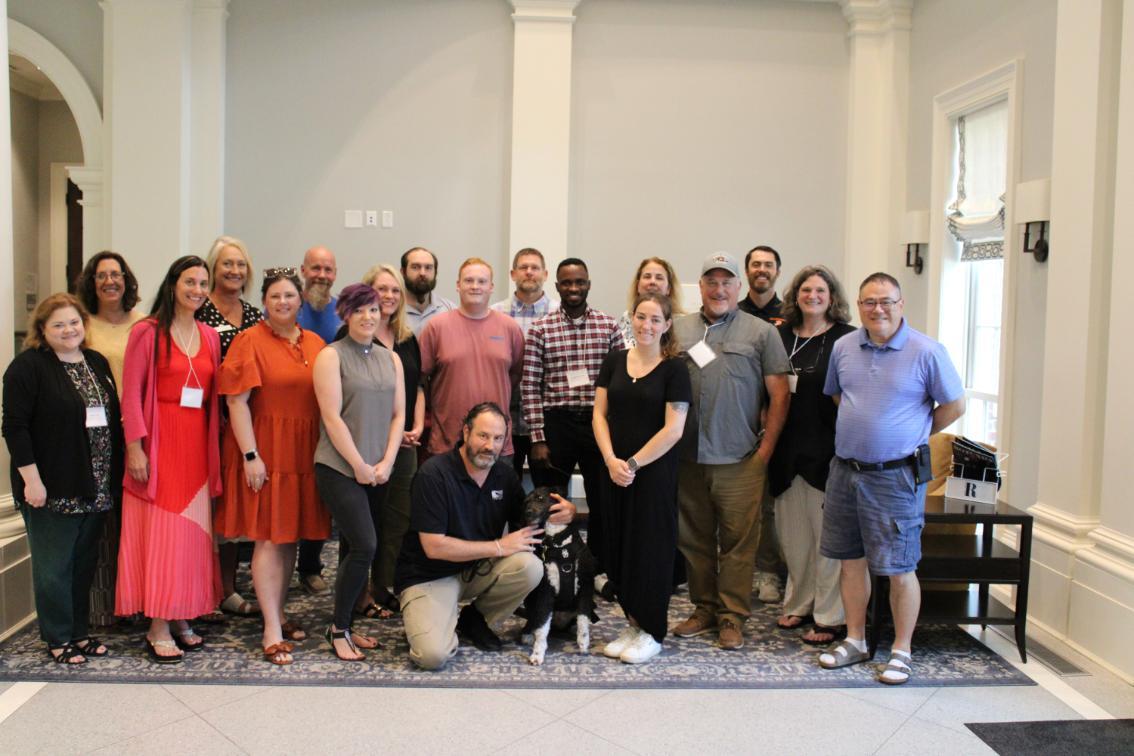Last week, Longwood University and the College of Graduate and Professional Studies in collaboration with the Virginia Department of Education, welcomed a cohort of educators from across Virginia to campus for the in-person portion of its summer Career and Technical Education (CTE) Institute. As part of a three-credit undergraduate course, these educators—many of them career-switchers or early in their teaching journeys—spent the week deepening their skills in curriculum design, lesson planning, and authentic assessment.
Though participants came from different regions and instructional backgrounds—criminal justice, EMT training, construction, and more—they were united by a common goal: to better serve their students in middle and high school CTE classrooms.
“Honestly, I’m here with basically nothing,” said Emily Young, a teacher at Academies of Loudoun in Loudoun County Public Schools. “So I know when I walk out of here, I’m just going to be more prepared for next year’s students. I’m really getting a good foundation of curriculum planning, building lessons, and collaboration.”
For Emily, Longwood wasn’t just a convenient fit—it was a sentimental one. “When I found out it was at Longwood, I was so excited. My sister went here, and after visiting her so many times, it feels like home.”
Paul McKenzie, also from the Academies of Loudoun, echoed that sense of connection and purpose. A former lawyer and college instructor now teaching criminal justice, Paul chose the course to fill a key licensure requirement—but discovered much more than just a checkbox.
“Meeting other teachers is fantastic in person. You don’t get that online. I’ve already learned two things I’m going to try from conversations with other teachers,” Paul shared. “I tend to learn more talking to other teachers, actually.”
Paul was also struck by the diversity under the CTE umbrella. “There’s construction, automotive, cybersecurity, EMT—so many different skill sets. What works for one field may need to be completely reimagined in another. Being here helped me see how to adapt lesson planning while still meeting required standards.”
-1134x756.JPG)
For Bruce Morrow, a construction instructor at Edison Academy in Fairfax County Public Schools, the experience was both validating and transformational. As a career switcher leading a high-level building trades program—his students recently completed a house now for sale at $1.35 million—Bruce came seeking tools to formalize instruction around hands-on work.
“What I teach isn’t common. There’s not a curriculum—I have to build it,” Bruce explained. “This course gives me tools to take what we’re doing—building houses, managing projects—and frame it in a way that’s digestible for students and aligned with certification goals.”
He also found deeper meaning in the work.
“The biggest surprise about teaching CTE? The thirst for knowledge from students who are looking for a path forward. Not everyone wants college, and the construction trades can be a viable, rewarding option,” he said. “Being able to help students see that—that’s why I teach.”
Like many of his peers, Bruce was surprised and impressed by Longwood’s welcoming campus and supportive faculty.
“I’ve had three kids go through Virginia state schools, and I’ll be honest—I didn’t know about Longwood,” he said. “But coming here and seeing the quality of instruction and the beauty of the campus—this is a real option. I’m a little sad I didn’t know about it sooner.”
As the week concluded, participants left not only with detailed curriculum maps and structured lesson plans, but also with renewed energy, clarity, and a sense of community—ready to return to their classrooms better equipped to serve students.
“It won’t be as chaotic anymore,” Emily said. “I feel a lot more organized. And that means a lot less stress—for me and my students.”


-1134x756.JPG)
-1134x756.JPG)